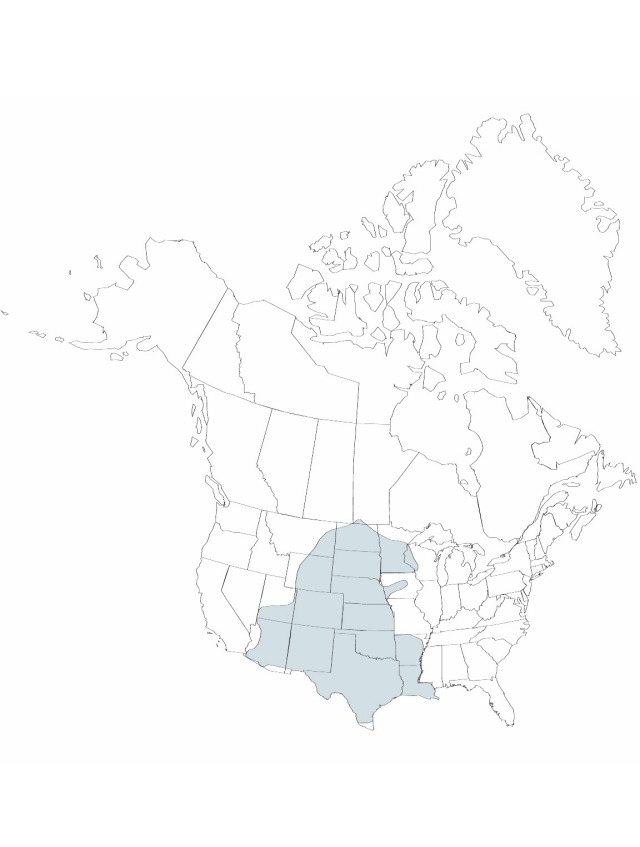Tradescantia occidentalis
Transactions of the Kansas Academy of Science 16: 163. 1899.
Herbs, erect or ascending, rarely rooting at nodes. Stems 5–90 cm; internodes glaucous, glabrous. Leaves spirally arranged, sessile; blade linear-lanceolate, 5–50 × 0.2–3 cm (distal leaf blades equal to or narrower than sheaths when sheaths opened, flattened), apex acuminate, glaucous, glabrous. Inflorescences terminal, often axillary; bracts foliaceous. Flowers distinctly pedicillate; pedicels 0.8–3 cm, glandular-puberulent, rarely glabrous or glabrescent; sepals 4–11 mm, glandular-puberulent, usually with apical tuft of eglandular hairs, occasionally with scattered eglandular hairs among glandular, rarely glabrous or glabrescent; petals distinct, bright blue to rose or magenta, broadly ovate, not clawed, 6–16 mm; stamens free; filaments bearded. Capsules 4–7 mm. Seeds 2–4 mm.
Distribution

North America.
Discussion
All of the chromosome counts cited by E. Anderson (1954) for this species are attributable to Tradescantia occidentalis var. occidentalis.
Varieties 2 (2 in the flora).
Selected References
None.
Key
| 1 | Sepals and pedicels ± uniformly glandular-puberulent, rarely nearly glabrous | Tradescantia occidentalis var. occidentalis |
| 1 | Sepals and pedicels completely glabrous | Tradescantia occidentalis var. scopulorum |